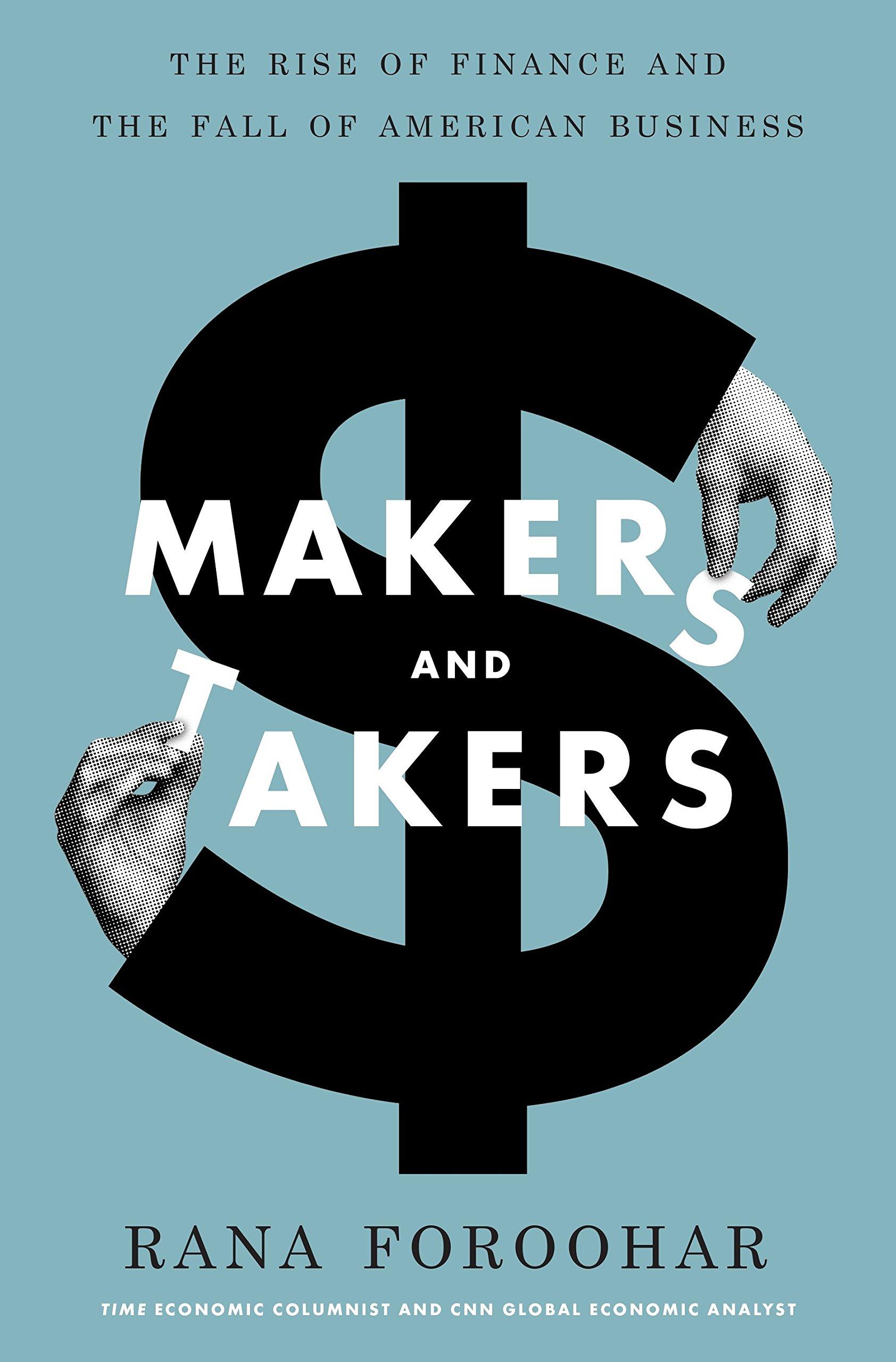Answered step by step
Verified Expert Solution
Question
1 Approved Answer
please read this worksheet and in the end there are short questions i need the answers for. thank you! I will upvote if answered correctly.
please read this worksheet and in the end there are short questions i need the answers for.
Supply Chain Management Every day, HP delivers 1.3 million inkjet cartridges, 110,000 printers, 75,000 personal computer systems, and 3,500 servers. The company spends almost $50 billion, or 64% of its revenue on supply chain activities (Collier & Evans, 2015). Optimizing their supply chain has a direct effect on revenue which affects customer satisfaction, stock price, and overall profitability, Sixty four percent of revenue is a very large amount. So, where does this money go? Transportation of materials and goods Suppliers Raw material and component parts Orders, information, retums, financial transactions Manufacturers Work in process and component part inventory Regional Warehouse Finished good Inventory Retail Store Finished good Inventory Customers Typical Supply Chain Structure The figure above shows all of the steps involved in Supply Chain Management. In this processpaw materials come in from the suppliers and get converted into goods. Along the way there is work-in- process and finished goods that must be warehoused and transported between activities until the product finally reaches the customer. However, this is only half of the process. On the right side of the diagram you can see the orders, information and financial transactions that flow back through the supply chain. In some instances there will also be material returns (like damaged phones) that must flow back to the manufacturer, or reusable items like empty ink cartridges that need to be managed. Key Supply Chain Concepts Supply Chain - is the portion of the value chain that focuses primarily on the physical movement of goods and materials, and supporting flows of information and financial transactions through the supply, production, and distribution processes. Supply Chain Management - is the management of all activities that facilitate the fulfilment of a customer order for a manufactured good to achieve satisfied customers at a reasonable cost. Distribution Centers - are warehouses that act as intermediaries between factories and customers, shipping directly to customers or to retail stores where products are made available to customers. Efficient supply chains-are designed for efficiency and low cost by minimizing inventory and maximizing efficiencies in process flow. Inventory - refers to raw materials, work-in-process, or finished goods that are maintained to support production or satisfy customer demands. Postponement - is the process of delaying product customization until the product is closer to the customer at the end of the supply chain. Pull system- produces only what is needed at upstream stages in the supply chain in response to customer demand signals from downstream stages. Push system - produces goods in advance of customer demand using a forecast of sales and moves them through the supply chain to points of sale, where they are stored as finished-goods inventory Responsive supply chains focus on flexibility and responsive service and are able to react quickly to changing market demand and requirement. Reverse logistics - refers to managing the flow of finished goods, materials, or components, that may be unusable or discarded through the supply chain from customers toward either suppliers, distributors, or manufacturers for the purpose of reuse, resale, or disposal. Third Party Logistics (3PL) providers integrate services that might include packaging, warehousing, inventory management, and transportation. Vendor Managed Inventory (VMI) is where the vendor monitors and manages inventory for the customer. The SCOR Model The Supply Chain Operations Reference (SCOR) Model is a framework for understanding the scope of supply chain management (SCM) that is based on five basic functions involved in managing a supply chain: Plan, source, make, deliver, and return. The SCOR Model The Supply Chain Operations Reference (SCOR) Model is a framework for understanding the scope of supply chain management (SCM) that is based on five basic functions involved in managing a supply chain: Plan, source, make, deliver, and return. Plan Developing a strategy that balances resources with requirements and establishes and communicates plans for the entire supply chain. This includes management policies and aligning the supply chain plan with financial plans. Source Procuring goods and services to meet planned or actual demand. This includes identifying and selecting suppliers, scheduling deliveries, authorizing payments, and managing inventory Make Transforming goods and services to a finished state to meet demand. This includes production scheduling, manging work-in-process, manufacturing, testing, packaging, and product release. Deliver Managing orders, transportation, and distribution to provide the goods and services. This entails all order management activities from processing customer orders to routing shipments, managing goods at distribution centers and invoicing the customer, Return Processing customer returns; providing maintenance, repair and overhaul; and dealing with excess goods. This includes return authorization, receiving, verification, disposition, and replacement or credit At first glance, this does not seem to be all that complicated. However, take a look at the APICS SCOR Reference Guide Version 12.0 and note the level of detail that must be followed to successful manage a Supply Chain Supply Chains in Action The United States consumes 391 million gallons of gasoline each day. We will assume that people fill up their cars once per week and that could happen on any day of the week. This means that approximately 55.9 million gallons are consumed each day during normal conditions. A simplified version of the gasoline supply chain is shown in the figure below. 14 days 3 days Odays Flow of goods (days after order receipt) Refineres Regional Datribution Centers Local Retail Stores Customer 2 days Flow of orders (days for order to be processed) 1 day O days The customer goes to a local retail store and buys gasoline. The retail store immediately knows the demand and the gasoline is given to the customer. So, there are 0 days needed for the order to get to the retail store and O days needed to move the goods. It is almost instantaneous. At the end of the day the Local Retail shop calculates their daily usage and submits an order to the Regional Distribution Center who will take a day to process the order and then it will take 3 days for the order to make it to the Local Retail Store. Similarly, the Regional Distribution Centers will determine their orders submit it to the Refineries who will take 2 days to process the order and 14 days to ship the gasoline to the Regional Distribution Center Now let's say that the Local Retail Stores decide that they should store more than the average daily demand. So, the Local Retailers store 150% of daily demand or 1.5*55.9. We will round this up to 84 million gallons of storage at the Local Retail Stores. Regional Distribution Centers can store up to 150 million gallons If gasoline costs $2.50 per gallon and the inventory holding cost is 20%: 1. How much money are the Local Retail Stores paying each year to store the extra fuel? Assume Q = average consumption (55.9 million gallons) 2. How much money are the Regional Distribution Centers paying to store the extra fuel each year? Assume Q = 150 million gallons What happens if on Monday the weather station projects a major weather system is going to affect a large percentage of the country towards the end of the week? Suppose that 20% of the people that were not going to get gas that day, chose to "top off their tanks. Suppose the same thing happened on Tuesday (another 20%) and Wednesday (another 20%). 1. How much fuel reserve would the Local Retail Stores have at the end of Monday? 2. How much fuel reserve would the Local Retail Stores have at the end of Tuesday? 3. How much fuel reserve would the Local Retail Stores have at the end of Wednesday? Starting surplus 28.1 Million gal 28.1 Million gal Demand 55.9 Million gal Ending surplus 28.1 Million gal Sunday Monday Tuesday Wednesday Deliveries 55.9 Million gal 55.9 Million gal 55.9 Million gal 55.9 Million gal 4. When will the first delivery of extra fuel show up if the Local Retail Stores increase their orders Monday night? 5. When will the Refineries finally get extra fuel to the Regional Distribution Centers? 6. What happens to the fuel reserve at the Regional Distribution Center between Day 2 and Day 18? 7. How do you make the Supply Chain more responsive? 8. Look at the concept definitions and determine if the gasoline supply chain appears to be a push system or a pull system. 9. One option to reduce the transit time from the Regional Distribution Centers to the Local Retail Stores is to allow a company that is very good at moving fuel to handle the distribution. This is an example of using a ...provider Now familiarize yourself with the APICS Supply Chain Operations Reference (SCOR) Model Reference Guide Version 12.0. According to the SCOR Model, how many steps would be associated with delivery of the gasoline since it is the delivery of a stocked product? 8. Look at the concept definitions and determine if the gasoline supply chain appears to be a push system or a pull system. 9. One option to reduce the transit time from the Regional Distribution Centers to the Local Retail Stores is to allow a company that is very good at moving fuel to handle the distribution. This is an example of using a .............provider Now familiarize yourself with the APICS Supply Chain Operations Reference (SCOR) Model Reference Guide Version 12.0. According to the SCOR Model, how many steps would be associated with delivery of the gasoline since it is the delivery of a stocked product? According to the SCOR Model, what is the difference between Make to Order and Engineer to Order? According to the SCOR Model, what is the Level 1 metric for Reliability thank you! I will upvote if answered correctly. 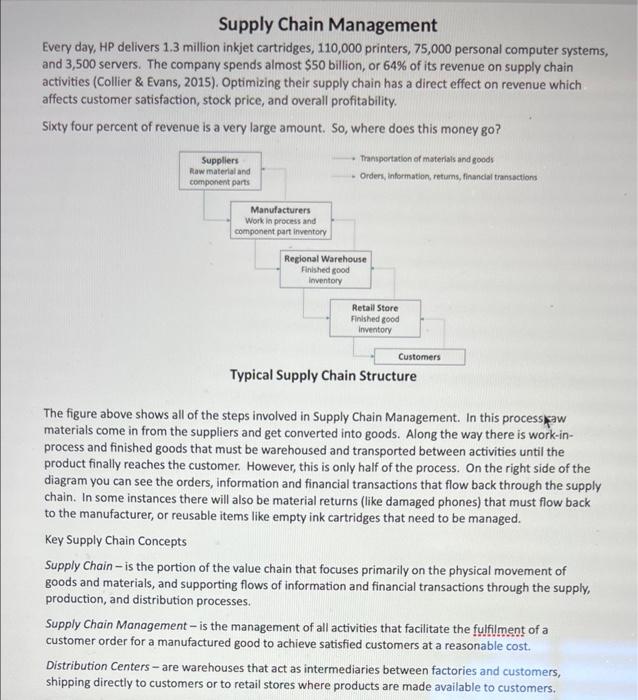
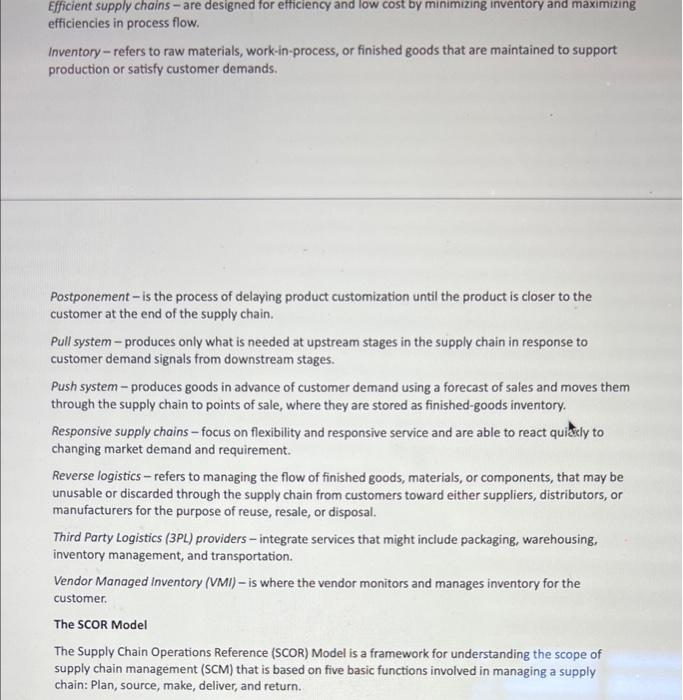

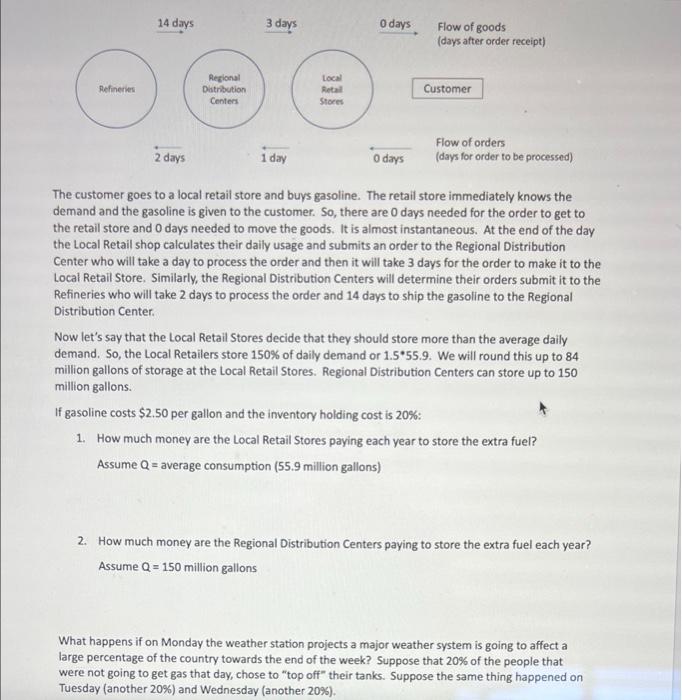
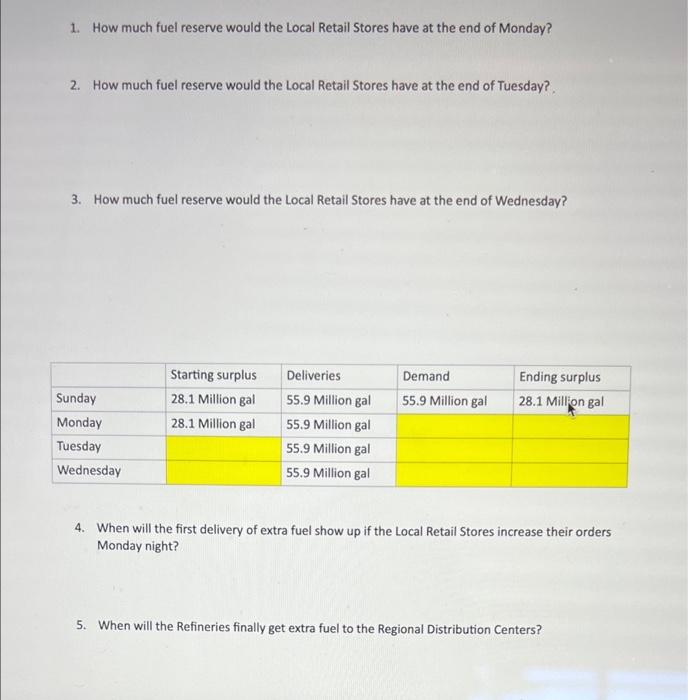
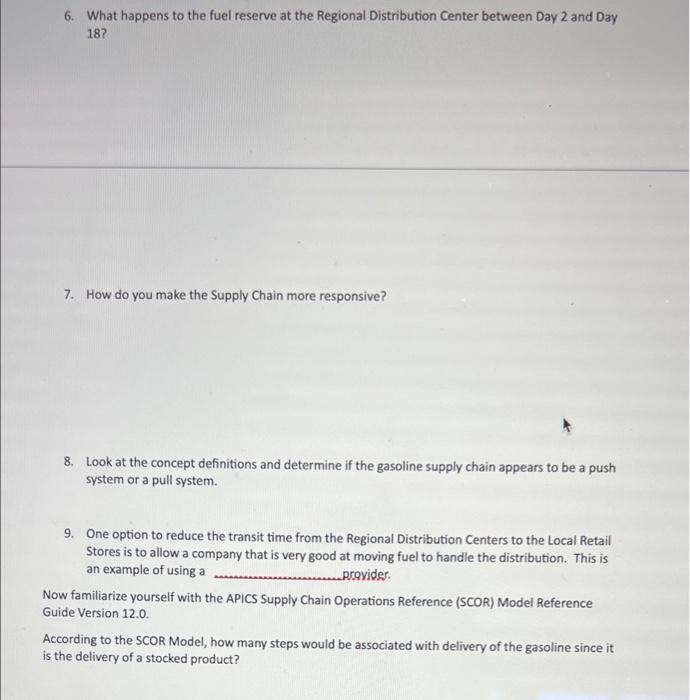
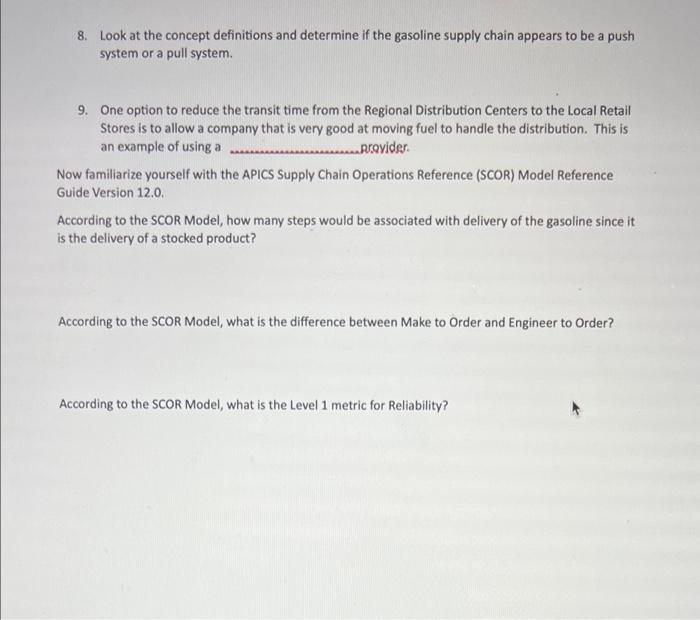







Step by Step Solution
There are 3 Steps involved in it
Step: 1

Get Instant Access to Expert-Tailored Solutions
See step-by-step solutions with expert insights and AI powered tools for academic success
Step: 2

Step: 3

Ace Your Homework with AI
Get the answers you need in no time with our AI-driven, step-by-step assistance
Get Started


